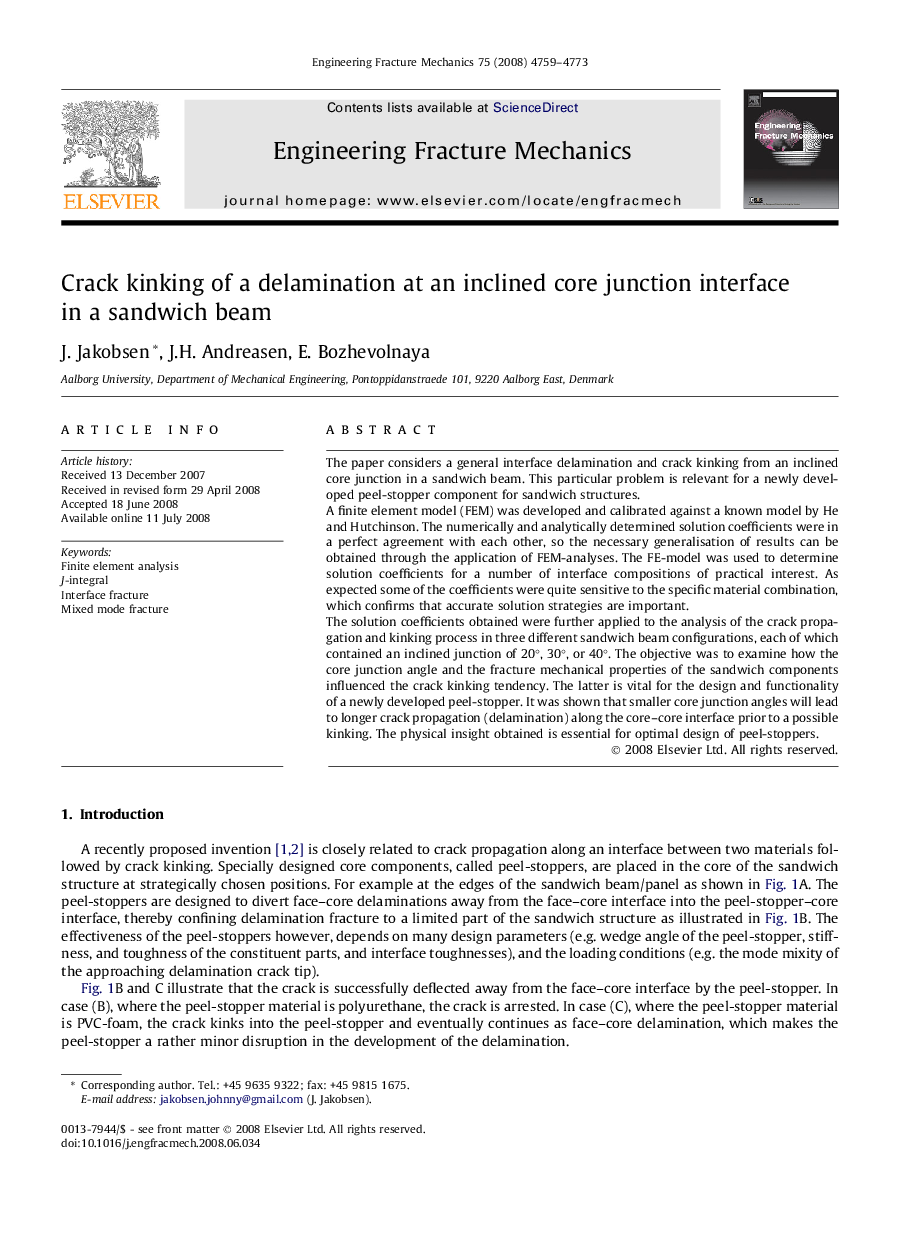| Article ID | Journal | Published Year | Pages | File Type |
|---|---|---|---|---|
| 767953 | Engineering Fracture Mechanics | 2008 | 15 Pages |
The paper considers a general interface delamination and crack kinking from an inclined core junction in a sandwich beam. This particular problem is relevant for a newly developed peel-stopper component for sandwich structures.A finite element model (FEM) was developed and calibrated against a known model by He and Hutchinson. The numerically and analytically determined solution coefficients were in a perfect agreement with each other, so the necessary generalisation of results can be obtained through the application of FEM-analyses. The FE-model was used to determine solution coefficients for a number of interface compositions of practical interest. As expected some of the coefficients were quite sensitive to the specific material combination, which confirms that accurate solution strategies are important.The solution coefficients obtained were further applied to the analysis of the crack propagation and kinking process in three different sandwich beam configurations, each of which contained an inclined junction of 20°, 30°, or 40°. The objective was to examine how the core junction angle and the fracture mechanical properties of the sandwich components influenced the crack kinking tendency. The latter is vital for the design and functionality of a newly developed peel-stopper. It was shown that smaller core junction angles will lead to longer crack propagation (delamination) along the core–core interface prior to a possible kinking. The physical insight obtained is essential for optimal design of peel-stoppers.
